First, in order to make the Navy language understandable, I will give the Navy lingo and the city equivalent. Keep in mind that a ship is basically a self-contained city, as well as a home for its people. A city building has "x" number of floors, whereas a ship has "x" number of decks. In a building with 3 floors, you look "up" to see the 3rd floor. On a ship, to see the 3rd deck, you look down. The main deck is the first and those below are the 2nd, 3rd, etc. Everything above the main deck is called the "superstructure". Walls are bulkheads, ceilings are overheads, floors are decks, doors are hatches, stairs are ladders. Engine rooms and boiler rooms are at the very bottom of the ship, and will represent 2 and in some cases 3 decks, and are always below the waterline. Thus the term "torpedo junction". Keep in mind that the boiler is the HEART of the ship. It supplies the "blood" steam that keeps everything else on the ship going. Without them, a ship is "DEAD". I hope that this info will give you a more clear picture in your mind's eye and perhaps a better understanding of what I am trying to tell you.
In the late 1930's and early 1940, Hitler was overrunning most of Europe and threatening England. I felt certain that the United States would certainly be drawn into it eventually. So, with this in mind, I asked my mother to sign an agreement to allow me to enlist in the navy. In early 1940, the navy announced the intention to allow 17 year-old men to enlist. I felt that I would be better off and have a better chance of survival if I was well-trained before we got involved. After much talk, mother was finally convinced. I went to Albany to enlist on my 17th birthday. As a result of the physical exam, I was sent home to have my teeth cleaned and would be summoned later to be sworn in. I was called to report for duty on Dec. 5th 1940 and sent to Newport, Rhode Island, for "boot training", which was for three months. In addition to the physical stuff, we were taught how to fight shipboard fires, repair damage, how to abandon ship after you reach the main deck. Nothing on how to get out of the below decks. Probably because your chance of surviving a torpedo attack is next to nothing. In any case, should you reach the topside, never walk directly into the water. Always go to a high point from the water and jump and then swim as fast as possible away from the ship as there is always a chance of being sucked into the ship as it sinks. On completion of boot camp, I was given 10 days leave after which I was sent to Dearborn, Michigan, to the Ford Motor Co. for 30 days training as a machinist. While at this school, the people at Ford went on strike. One day, when our commander was returning to our compound, the picket's attacked his car and our gate guard called the officer-of-the-day who then called out all hands and issued rifles and bayonets. We marched double-time to the gate with fixed bayonets. When we arrived, the picket's quickly left and never again picketed our gate. I do not know if I would have used the weapon or not. But by this time, we were far enough forward in our training that it probably would have been an automatic "carry out your orders". On completion of this training, I was then shipped to Long Beach, California, where I was assigned to the USS HELENA CL50, a light cruiser. On reporting to the engineering department, I was asked if I could type. I was then assigned to the engineering office temporarily. The office was located on the third deck at approximately mid ship. The entrance to the NO. 1 fire room was located off the passageway and on the opposite side of the passageway, toward the outboard side of the ship, was the entrance to the office.
My first exposure to war came on Dec. 7, 1941, at 0748 in Pearl Harbor. My memory of some of this day is not the best. The PA announced General Quarters (battle stations). The Japs were attacking Pearl Harbor I was in the Log Room (engineering office) at that time. As I stepped from the office to go to my battle station, a torpedo struck in the engine room that was directly below the office. The force of the explosion was so great that it bulged the deck more than a foot high, and propelled me up against the overhead (ceiling) and knocked me unconscious. I do not know how long I was out. When I came to, I saw several men who had been burned by the flash of the explosion. I was lucky. The flash had traveled along the deck about 3 feet high and apparently passed by while I was in the air. I then proceeded to my battle station. I do not remember ever arriving there. The next thing I do remember is being on the dock where some of the wounded were being loaded in the ambulance when a Jap plane came along, strafing the dock. I ran to the gangway and lay in its protection. Several men on the dock were killed by the strafing. I got up to go back aboard. I looked back to the dock and saw one man stretched out over one of the men on a stretcher. I don't know if he was dead or alive or if he was trying to protect the already wounded. Was he a HERO??? Who knows?? What I do know is that your training is such that you do what instinct tells you to do. I am sure that if you take time to consider the consequences, you eliminate instinct. The Jap got his due because one of our gunners shot him down. The sight of the burning of the Arizona , the Oklahoma on its side, and all the rest was such that I have no memory of where I went or what I did the rest of that day. The next day we spent on full alert and checking who was hurt or killed. The third day was spent on assessing the damage and making ready to be towed into dry-dock for a patch over the hole in the hull to enable us to return to the States for the extensive repairs needed. The hole in her side was big enough to drive a big rig truck though it. All of #1 engine room and all of #1 fire room were completely destroyed. #2 fire room had extensive damage, but could be made to operate and provide enough steam to allow us to make it to Mare Island Navy Yard for all of the major repairs needed. During the attack, the Oglala, an ammunition ship, was tied up alongside us. The explosion of the torpedo in our ship burst the hull of the Oglala and she had to be towed aft of us, where she rolled over and settled on the bottom. The HELENA had also settled on the bottom. The harbor is only about 35 to 45 feet deep. We lost 4 men in #1 fire room and 4 men in #1 engine room. I do not know if we lost anyone in #2 fire room. There were several men in the passageway outside the engine room who had been burned to death by the flash. We also lost a number of men on the topside as a result of the strafing. There was a second attack by the planes, but I don't recall for sure if it was the same day or the next day. I think it was later that same day. Our ship was given credit with downing 4 Jap planes in spite of the fact that the first 10 minutes were fought with "target ammunition". That is, three tracer shells and one live shell. That gives you one chance in four of doing any damage to the target. Sometime later, we were told to write a letter home to let them know we were OK. However, according to my mother, a wire was sent to her informing her that I had been killed. She received my letter a few days later. After the hole in her side had a temporary patch, we proceeded to return to the States. We had no escort and no way to defend ourselves from subs. It took about 10 days since our speed was limited and we had to zigzag a lot in order to try to avoid a sub attack. In addition to the zigzagging, we had to travel in the troughs instead of into the waves because it was not known if the keel had been weakened. The keel is the spine of the ship. Perhaps this is the time to endeavor to explain how and what I felt during this period. First let me say this, I was scared stiff, but with so many "practice general quarters" everything you do is automatic and by instinct. There is a saying in the military that goes like this: Anyone who has been in combat and says that he was not scared is either the biggest LIAR or the biggest FOOL in the world.
We were in Mare Island Navy Yard for about three months. I was granted a 20 day leave and went home. On completion of repairs, I was assigned to a new battle station. It was in the after living space sleeping quarters. My job was to close off the compartment and stack all bedding in the center of the compartment. It did not make much sense, since there was no means of communication with anyone else on the ship in the event of a problem. When we left the Navy Yard, we headed for Guadalcanal in a convoy of destroyers, aircraft carriers and another cruiser. I do not remember which one. About halfway there, the carrier USS WASP was torpedoed and sunk. After the destroyers either sunk or ran off the sub, we and a couple of the destroyers picked up the survivors. When we arrived at the Canal, the planes carried on the flat-tops for the Marines on the Canal were unloaded, and the replacement Marines sent ashore. On the third day of our arrival, we were attacked by a squadron of Jap planes. They were driven off or shot down. I don't know how many we got. We lost one cargo ship. Fortunately, the ship had been unloaded the day before. This was the start of many engagements we were to participate in.
The next two or three months were spent assisting the Marines by shelling enemy positions on the islands around the Canal. After these battles, I went to my division officer and suggested that it made no sense to man that station since in the event of a problem there was no way to communicate with anyone else anyway. Shortly after this, I went to sick bay and talked to the doctor. I told him that I thought I was on the verge of "cracking up". (We already had some men who had "lost it".) The Doc asked who I was and when I told him, he laughed and said "your Frenchy, you have the aft living space. If you haven't cracked yet, you never will." I was then reassigned to the #1 engine room. Needless to say, during my time in that station, I was scared spitless. We fought off several other air attacks during this time.
Then, in November, to be exact, the night of the 12th and morning of the 13th, the biggest "ship to ship" battle of World War Two was fought. Remember "ship to ship". NO AIRCRAFT. The other so-called "sea battles" such as Midway and the Philippines, were "ship to aircraft". We had 2 heavy cruisers (USS SAN FRANCISCO, USS PORTLAND)1 light cruiser (USS HELENA), 2 anti-aircraft cruisers (USS ATLANTA USS JUNEAU ) and 8 destroyers, the names of which I do not recall. This was the first real trashing that the Japs got. They had more than 25 ships, including 2 battleships. I do not recall how many of them were sunk; we were credited with 2 destroyers, one cruiser, and helping to damage severely one of the battleships. I have no official data of their losses, only what was told to us by our Captain. We were told that the air force had inflicted severed damage to those that got away and had sunk the crippled battleship. As for our losses, the Portland was damaged and limped over to Florida Island which is on the other side of the Canal. The San Francisco suffered severe superstructure damage and Admiral Callaghan was killed, along with many other officers and crew. The Atlanta was severely damaged and was beached to keep from sinking. I have no knowledge of the casualties. The Juneau was damaged, but we were not told how badly. I have no knowledge on how many destroyers, if any, were damaged or sunk. However, on our way back to Espiritu Santo, Red (Bob) Murrish & I were sitting on the fantail deck and we counted 7 destroyers. We were looking at the Juneau steaming off our port side and trying to figure out where and how badly she was hit. All of a sudden there was a big puff of smoke, then the bang, and she was gone. How anyone could survive that, I will never know. It is reported that there were survivors. Red and I both believe that any survivors of the Juneau were more than likely blown over the side in the canal the night before. The five Sullivan brothers were lost in that explosion. We continued our shelling support of the Marines on the many islands in the area. In April we were sent to Australia for some retrofitting. Our 50 caliber machine guns were replaced with 20mm anti-aircraft guns. We were there 20 days. A really great time was had by all. The people treated us like Royalty.
After more shelling and a couple of air attacks, we had our last ship-to-ship battle. We along with some destroyers and 2 other cruisers (not sure which ones, but I think one was the Saint Louis. 2 of the destroyers were the Radford and the Nicholas, they picked up our survivors. The Radford picked me up. The battle was intense and did not last very long although it felt like an eternity to me. My battle station on this night was "third deck repair". The way it works is this: We had three groups called "watches". Each time we went to battle stations, two watches would be in the engine room and the third watch would be in third deck repair, just outside the engine room entrance. The watches were rotated so that you had two battle station watches in the engine room and one in third deck repair. This gave every man assigned to that engine room a one in three chance out of "torpedo junction". I do not remember how long the battle lasted. It seemed like forever. We were told that three Jap destroyers made a run on us and that we sunk two of them but one got through and it was their three torpedoes that got us. The first one hit the bow of the ship at the #1 magazine. The next two hit in the #1 engine room and the ship broke open on the port (left) side and the water came rushing in. It threw me and one of the new kids against the starboard side bulkhead (wall) and a three by seven foot locker pinned us to the bulkhead and dazed or knocked out the kid. I grabbed for his wrist. It was at this time that the starboard side broke open and because of all the fuel oil that we were covered with, I could not hold onto him. He did not make it. It was this incident that was the subject of most of my dreams and nightmares. They lasted about 10 years after I got out. Strangely, I never had a nightmare while aboard ship. An occasional dream only. I assume that fear of what shipmates might think just kept them on the back burner. These days, it is now only an occasionally mild dream. After being pushed around by the water for I don't know how long, I found myself sliding along in the next compartment, gasping for air. I have no idea how the hatch (door) to the adjoining compartment got open. I could barely see for all the oil in my eyes. I was covered from head to foot with the thick, gooey stuff. I am not sure, but I think there were 14 of us in this compartment, and to my knowledge, only two of us got out. I got to my feet and ran aft to the next hatch. The water was already waist-deep in this compartment. I opened the hatch to get out and the men on the other side tried to close it, seeing all the water coming in. I yelled as loud as I could that the ship had broke in two and with the help of the water pressure on my side of the hatch, I was able to push my way through. I made my way to the center of the compartment where the ladder up to the second deck was. As I went through the hatch at the top of the ladder I rolled over on my side to catch my breath. Another man was also lying there. I nudged the guy to tell him we better get going, but got no response. He was dead. I made my way up to the main deck aft, where the water was already on the deck. The aft end of the ship was completely out of the water. I climbed up the deck and jumped into the ocean. Training told us to never walk into the water that is even with the deck, as there is the danger of being sucked down and into the ship where the water is rushing in. I made my way to a raft that was about 40 yards from the ship. The raft was full, so I had to hold onto the side with the help of someone already inside. That was a good thing, because I was so sick and vomiting from swallowing so much salt water and fuel oil that I hardly had the strength to hang on without help. While looking back at the ship as it was sinking, I could see that there were some men still holding onto the guard rail on the fantail. I do not know if they could not swim or were just scared. The Jap ship that was firing at our raft started to head for us in an attempt to run us down. That may be why the guys still onboard stayed there and went down with the ship. Our "HOME", the USS HELENA, SUNK BELOW THE SEA ON JULY 6, 1943, AT 0220 (2:am). One of our destroyers got between us and the Jap ship and sunk it. We were in the water about 3 hours when the destroyer RADFORD came back and picked us up. By the time I got onboard, I was so exhausted I just flopped on the deck and lay there until a medic came by and helped me down to the sick-bay. The ship's doctor checked me over and said that other than a slight rupture in my ear, I was OK. In the meantime, we were not out of the woods yet. As we were leaving Kula Gulf, their shore battery opened up on us. Fortunately, they missed.
The crew of the RADFORD were great. They all dug into their lockers and came up with a change of clothes for each of us. It was really appreciated. A shower to remove most of the oil felt great. We were taken to Espiritu Santo Island where we were given a Red Cross package containing toilet articles. We were kept there for almost two weeks and then put aboard a merchant ship for transport back to the States. We were then taken to the navy base on treasure island San Francisco. There were only about 40 of us in this group. Others were transported to other west coast bases. I don't know how true it is, but we were told that of the almost 1,300 men and officers on our ship, we lost over 700. I have never seen any official numbers. But having been there, it is entirely possible. We were issued new clothing (just the minimum) that did not begin to replace what we lost. Most of us had enough of everything to last a week between laundry days. What we got was a three day supply. We also found out that the sinking of our ship was the only ship reported sunk in the war up to now, in the papers, before the next of kin were notified. Proof of that was all my relatives and friends knew on the 7th of July. My mother was frantic. My best friend, Carl Brooker, went to see Mom and told her not to worry because "if there was a hole to swim through I'd find it". Mom said he was a great comfort. We all got 30 days survivor's leave and were told we would receive our new orders when we reported to San Diego Navy Base when our leave was up. It was rumored that we would be getting a "milk run" between the States and Pearl. What a joke!! We were assigned to the cruise ship President Polk that was being converted to a troop ship and was designated USS POLK P103.
Our first assignment was to pick up Marines and proceed to Pearl. After about 2 weeks of practice landings on one of the nearby islands, it became obvious to us that we had no "milk run". We soon found out that the destination was a small island called"TARAWA" (not sure of the spelling). The island was really well fortified with many "pill boxes" and many "sand-pit machine-gun nests" in the sand on the beach. The first wave of Marines took a hell of a beating as many drowned or were machine-gunned down before they ever got on the beach. Someone in authority forgot to take into consideration the tide and the reefs. Our landing boats could not get past the reefs because the tide was out and the Marines got off with full packs in water over their heads. The result was that many Marines were not killed by gunfire, but instead were drowned. Our ship was fired upon by shore battery, but we received no damage. One side of our mess-hall was made a hospital and our doctors were real busy. A tarp was stretched down the middle of the mess hall to separate the "operating room" from the mess hall tables. Not very appetizing, but when you get hungry enough, you eat. The island was a tough nut to crack, but our marines were tougher. They deserve every bit of credit they can get.
After the island was secured, we proceeded to the Gilbert Islands. We returned to Pearl and transferred the wounded we had onboard to the Navy Hospital. In the months to follow, we participated in attacks on Mendinowa, Bouganville, Guam, Marianas Islands, San Narciso, Luzon, Philippine Islands, and other smaller islands that I do not recall their names. One thing that happened on Bouganville that was a real joke was this: We were anchored about 100 yards off the beach about 1 week after the marines went ashore and some of them were getting a break from the front lines and were swimming down the beach. Now here comes three LST's with the Army aboard. The ramps dropped and several camera men ran ashore and set up cameras. Then 2 soldiers got off and made a "rifle chair" and carried MacArthur to knee-deep water and set him down. I was watching this from the main deck. About a week or so later we got movies aboard and the "news reel" showed the episode entitled "MacArthur and the Army takes Bouganville". No mention that the marines were already there. Every one got a big laugh out of that.
The next big one was IWO JIMA. This time we had the 4th Marine Headquarters Division onboard. After the landing force debarked, I was able to talk to a marine captain about the fact that my brother George was on the island with the 5th marines and I had not seen him since early 1941. George was in the navy but assigned to the marines as a medic. The captain somehow arranged for George (who was on the front lines in an aid station) to come out to the ship to see me. Needless to say, it was a joyous reunion. While he was aboard, we were shelled by Jap artillery from Mt. Suribachi and took a small hit up forward. The skipper hauled anchor and we moved to the other side of the island with George aboard. After showing him around, I took him to the mess hall where he had his first square meal in many, many days. No "K" rations on this day for brother George. He was finally able to return to his unit later that day. We did not get to see each other again until 1945. It was about this time that I was sent back to the Long Beach Hospital for surgery on a growth on the end of my spine. I was there for about ten days and then returned to my ship. I don't recall were she was when I finally caught up to her. Shortly after, we were on our way to the Philippines to take it back from the Japs. I guess they knew that this had to be their last ditch effort for they now used suicide planes to attack our ships. They really raised hell with the fleet. Again, we were lucky. We suffered no losses on our ship; just a lot of frayed nerves.
After this I was transferred to the battleship USS MISSOURI. We then went to "Gitmo" Navy Base in Cuba. Shortly after arriving in Cuba, I was transferred to the Navy Supply Depot at Scotia, New York. This assignment was the result of my first wife Beverly having a nervous breakdown. I was there for two years in the capacity of an equipment specialist, classifying the material there for retention or disposal. It was about this time that I was asked if I was going to re-enlist. I was eligible at this time for advancement to Chief Petty Officer. I was told if I wanted the advancement, I had to commit to re-enlist. Not liking to be pressured, I cut off my nose to spite my face, and took a discharge. A year later, I re-enlisted. I lost one stripe and had to wait 1 year to regain my first class rating.
My first ship on returning to the navy was the USS NEW JERSEY BB62. Within a few months, we were sent to the Brooklyn Navy Yard to decommission the ship. It was actually after this that I went to Scotia Supply Depot. After the supply depot I was again assigned to the USS NEW JERSEY. We put the ship back in commission. After our shake-down cruise, we were scheduled to go to Europe and an around-the-world cruise. However, it was at this time that the Korean War broke out, so our orders were changed. We steamed down through the Panama Canal and up to San Diego and from there to Korea. About half-way through the canal, our ventilating system quit. This is serious because all the machinery below is largely dependent on it to keep the various pumps, generators, etc, from burning up. The temperature down there will get between 140 and 150 degrees. We had to cool things with fire hoses until vents could get going again. With temps that hot, the first two men to go in were overcome. I suggested turkish towels soaked in ice water and wrapped around the face might help for 5 to 10 minutes. It did, and I got a letter of commendation from the captain. I sent the letter home, but it somehow got lost. I have no idea what happened to it. We participated in this war for 3 months and then went to Yokosuka, Japan, Navy Base, where we were resupplied and allowed liberty. After 30 days in port, we were again returned to Korea where we again assisted the land forces with long range bombardment. During this assignment we only got hit once and only lost one man from shore battery that hit a forward anit-aircraft gun. This war for us was like a pleasure cruise for me compared to WW2. And combat in today's navy is so much "long distance" with missles instead of guns, you don't really know what's happening.
My navy career is over. Beverly had another breakdown and the navy sent me home. Just 1 year prior to this I had reenlist for another 6 years. It was my intention to stay in the navy for 30 years. I really loved the navy and would have stayed the 30 years. The young people of today have no idea what a snap it is today. The engagements they are involved in today's navy are done hundreds of miles away. The conditions aboard ship today as compared to the 40's & 50's are like day and night. I had occasion to observe this when I visited the USS MISSOURI during the 50th anniversary. It was this trip that started bringing it all back bit by bit. When a reporter asked me if I was having a good time, I replied that I had come there to honor the "poor people that did not make it". Then I broke into tears. And now all it takes to bring on tears is the National Anthem, Taps, or the raising of our colors. It is gradually lessening since I started this Journal. But I hope I never lose the feelings altogether. I only wish that all Americans were more intensely patriotic and proud of our country and show more concern for the loss of "integrity, morality, and self-esteem".
I have omitted gory details; they would do service to no one. I am hoping that by putting my experiences down on paper that it perhaps will cleanse my mind of the unpleasant times of my life. That is not to say that I did not love the Navy, because I did and still do. I dread to think what our people in Washington are doing when they continue to deplete our armed forces because they think there is no longer any enemy. I would remind them and anyone else that there is still China, Iran, Libya, Irag, Syria, and let's not forget Russia who still has missiles pointed at us. No one picks on the toughest kid on the block.
At this point, I don't know who will read this and who will not. However, I hope that all my children, grandchildren and great-grandchildren will have read this Journal. Then perhaps they will have a greater appreciation for this great country we live in and realize what so many men and women did to keep it great. I would also ask each of you to exercise your right to vote and while doing so, consider the past and present character of the person you vote for and never again allow a treasonist, womanizer, and liar like "Slick Willie Clinton" in the most prestigious position in the world again.
I THANK YOU ALL FOR TAKING THE TIME TO READ THIS.
To read Gene's story with links added, click HERE
A Family Affair. The US Navy. Click HERE.
E. E. LAJEUNESSE Military Awards for his WWII Service

Navy Unit Commendation

Good Conduct Medal
Two Awards
|
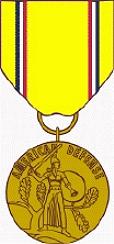
American Defense Medal
|
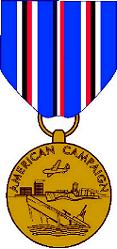
American Campaign Medal
|
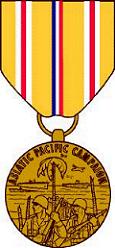
Asiatic Pacific Medal
With Nine (9) Battle Stars
|
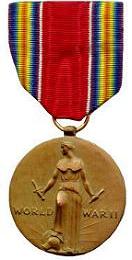
World War II Victory Medal
|
E. E. LAJEUNESSE Military Awards for his Korean Service

Philippine Presidential Unit Citation
| 
Republic of Korea Presidential Unit Citation
|
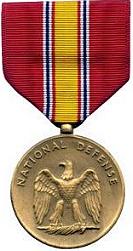
National Defense Service Medal
|
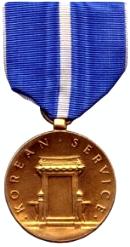
Korean Service Medal
With One (1) Battle Star
|
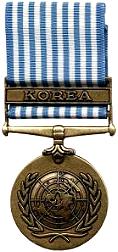
United Nations Korean Service
|
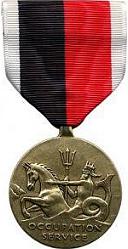
Navy Occupation Service Medal
|













